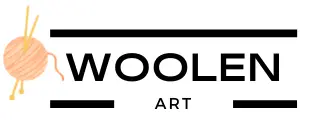In the digital age, where first impressions are made in seconds, a visually appealing and well-structured website is essential for any business or individual looking to make an impact online. This is where the magic of CSS (Cascading Style Sheets) comes into play. CSS empowers web developers and designers to create stunning, customized, and responsive web pages that captivate audiences. In this article, we will delve deep into the world of CSS, discussing its fundamental concepts, and key properties, and providing insights into how it can be harnessed to create beautiful websites.
Table of Contents:
1. Understanding CSS: The Building Blocks of Web Styling
2. Linking CSS to HTML
3. CSS Selectors: Targeting Elements on Your Page
4. CSS Properties: The Aesthetics of Web Design
5. Creating Responsive Designs with CSS
6. The Power of CSS Frameworks
7. Debugging and Troubleshooting CSS
8. Optimization and Best Practices
9. The Role of CSS in Modern Web Development
10. Frequently Asked Questions (FAQs)
1. Understanding CSS: The Building Blocks of Web Styling
CSS, or Cascading Style Sheets, is a language used for describing the look and formatting of a document written in HTML. CSS works alongside HTML to control the visual aspects of a web page, such as fonts, colors, layouts, and spacing. It allows you to separate the structure of a web page from its presentation, providing more flexibility and control over how your website looks.
2. Linking CSS to HTML
To apply CSS styles to an HTML document, you need to link the CSS file to your HTML file. This is typically done by using the `<link>` element within the HTML `<head>` section. Here’s an example:
“`HTML
<!DOCTYPE html>
<html>
<head>
<link rel=”stylesheet” type=”text/css” href=”styles.css”>
</head>
<body>
<!– Your HTML content here –>
</body>
</html>
“`
In this example, “styles.css” is the external CSS file that contains the styling rules for your web page.
3. CSS Selectors: Targeting Elements on Your Page
One of the fundamental aspects of CSS is selecting HTML elements to apply styles. CSS selectors help you target specific elements or groups of elements on your page. Some commonly used selectors include:
– **Element Selector**: Selects all instances of a specific HTML element. For example, to style all `<p>` elements, you can use `p` as your selector.
– **Class Selector**: Selects elements with a specific class attribute. For instance, to target all elements with the class “highlight,” you can use `.highlight` as your selector.
– **ID Selector**: Selects a single element with a specific ID attribute. To style a unique element with the ID “header,” you can use `#header` as your selector.
– **Descendant Selector**: Selects an element that is a descendant of another element. For example, `ul li` would select all `<li>` elements inside a `<ul>`.
– **Pseudo-class Selector**: Selects elements based on their state or position, such as `: hover` for elements when the mouse is over them.
4. CSS Properties: The Aesthetics of Web Design
CSS properties define the visual characteristics of the selected HTML elements. There is a wide range of CSS properties that allow you to customize various aspects of your web page. Some common properties include:
– **Color**: Used to set the text color, background color, and border color of elements.
– **Font**: Controls font size, family, style, and weight.
– **Margin and Padding**: Define spacing around and within elements.
– **Width and Height**: Determine the size of elements.
– **Border**: Adds borders to elements, allowing customization of border width, style, and color.
– **Background**: Sets background images and colors.
– **Text-align**: Positions text content within an element.
– **Display**: Alters how elements are displayed, whether they’re block-level or inline.
– **Position**: Controls the positioning of elements on the page, allowing for absolute or relative positioning.
– **Flexbox and Grid Layout**: Advanced layout properties for creating responsive designs.
5. Creating Responsive Designs with CSS
In the era of various screen sizes and devices, creating responsive web designs is crucial. CSS provides powerful tools like Flexbox and Grid Layout to help you build responsive layouts that adapt to different screen sizes. Media queries are another essential CSS feature that allows you to apply different styles based on the device’s characteristics, such as width or orientation.
“`css
/* Example of a media query for responsive design */
@media screen and (max-width: 600px) {
/* CSS rules for screens with a maximum width of 600px */
}
“`
6. The Power of CSS Frameworks
CSS frameworks are pre-designed sets of CSS rules and templates that simplify the web design process. They provide a solid foundation for styling web pages, and popular CSS frameworks like Bootstrap, Foundation, and Bulma offer a wide range of components and styles to choose from. These frameworks help developers save time and create consistent and attractive designs.
7. Debugging and Troubleshooting CSS
Creating complex web designs with CSS can sometimes lead to unexpected issues and bugs. Common challenges include layout problems, browser compatibility issues, and specificity conflicts. To tackle these challenges, developers use browser developer tools to inspect and debug CSS styles in real-time. Additionally, validation tools like the W3C CSS Validator can help identify and fix syntax errors in your CSS code.
8. Optimization and Best Practices
Efficient CSS can significantly impact your website’s performance. To optimize your CSS code, consider the following best practices:
– Minimize the number of HTTP requests by consolidating and minifying CSS files.
– Use shorthand properties to reduce the size of your stylesheet.
– Avoid using overly specific selectors that can lead to increased file sizes.
– Utilize external CSS files for better caching and faster loading times.
– Regularly update and clean up your CSS to remove redundant or unused styles.
9. The Role of CSS in Modern Web Development
In today’s web development landscape, CSS plays a central role in creating not only visually stunning websites but also in achieving optimal user experience. The combination of CSS, HTML, and JavaScript forms the core trio that powers web applications and responsive web design. It’s integral for web designers and developers to stay updated with the latest CSS features, frameworks, and best practices to maintain a competitive edge in the digital world.
10. Frequently Asked Questions (FAQs)
Q1: What is the difference between inline and external CSS?
A1: Inline CSS is applied directly to an HTML element using the `style` attribute, while external CSS is stored in a separate stylesheet file (typically with a .css extension) and linked to the HTML document using the `<link>` element in the `<head>` section. External CSS is preferred for larger projects as it promotes code reusability and maintainability.
Q2: How can I center an element horizontally and vertically with CSS?
A2: To center an element horizontally, you can set its `margin` property to `auto`. To center an element vertically within a container, you can use the Flexbox or Grid Layout. Here
Here is an example of vertical centering using Flexbox:
“`css
.container {
display: flex;
align-items: center;
justify-content: center;
}
“`
Q3: What are CSS preprocessors, and why are they used?
A3: CSS preprocessors like SASS and LESS are scripting languages that extend the capabilities of CSS. They offer features such as variables, nesting, and functions, making CSS code more maintainable and efficient. Preprocessors compile into standard CSS for browser interpretation.
Q4: How do I ensure cross-browser compatibility when styling with CSS?
A4: To ensure cross-browser compatibility, use CSS vendor prefixes for properties that require them. Additionally, regularly test your website on various browsers and use CSS feature detection libraries like Modernizr to handle inconsistencies.
Q5: Can you recommend some resources for learning CSS?
A5: Absolutely! Some excellent resources for learning CSS include Mozilla Developer Network (MDN) Web Docs, W3Schools, CSS-Tricks, and various online courses and tutorials on platforms like Codecademy, Udemy, and Coursera.
Conclusion:
CSS is the backbone of web design, allowing developers and designers to craft visually stunning and responsive websites that captivate audiences. By understanding CSS’s core concepts, properties, and best practices, you can create a web presence that stands out in the competitive digital landscape. Whether you’re building the “Best Digital Marketing Agency In Indore,” a top-notch web development agency, or the “Best WordPress Website Development Agency” and “Best Shopify Development Company,” CSS is your artistic canvas to paint a beautiful online picture.
So, embrace the power of CSS, master its intricacies, and create web pages that leave a lasting impression.










